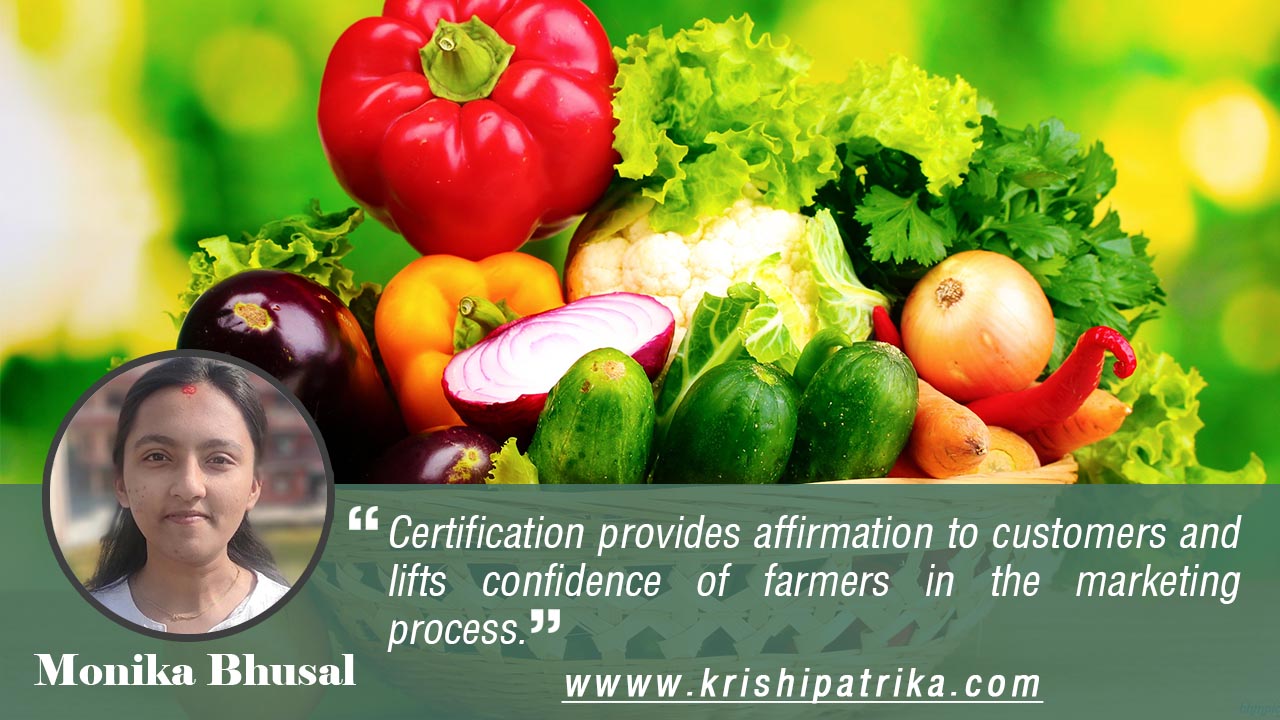
Organic certification is a process of branding or labelling your farm or farm products declaring them to meet the standard guidelines set so as to be called organic. It is a process ensuring that the producers and processors strictly follow the requirements and standards set. After the certification of farm or products, one is issued with a certificate which is a written guarantee provided by independent third agency stating the processes of production and products satisfy the specific standards. Farms or products are then furnished with label and the branding of the products can be done.
Why certification is necessary?
Certification provides affirmation to customers and lifts confidence of farmers in the marketing process. Products in farm are grown following organic production system and are tracked from field to market ensuring they are within the organic standard maintaining economic, social and environmental integrity. On basis of this tracking, products are then further labeled as “100% Organic”, “Organic” (95% – 100%) or “Made with organic ingredients” (at least 70% organic ingredients). This helps customers to easily recognize and differentiate organic foods from other. Certification helps both farmers and customers to build trust and deal easily with belief during the trade. After provision of labels and brand, farmers can comparatively get higher price for their products.
According to the report of International Federation of Organic Movement, 9789 ha of organic land is managed by 1470 producers of Nepal. And there were only 26 farms in Nepal covering 45 hectares of land registered as organic farms in 2005. There are many nationally and internationally accredited organizations or third party agencies working to issue organic certification in Nepal. Organic Certification Nepal (OCN) is the only one national certification organization in Nepal whereas there are many international organizations like NASAA (Australia), ECOCERT (France), One Cert Asia (USA), IMO (Switzerland), Control Union (Netherlands), Cert All, ICEA (Italy), ECOCERT (Aryal & Tripathee, 2018). But many of the farmers and peoples are unaware about the process of how certification works and what the requirements are.
Some general steps followed during the certification process are shown below:
First of all, applicant must choose the certifying agency before applying for organic certification. Once the certifying agency is decided, applicant should maintain the record of entire production, list of products grown, raised and processed, processing and handling process and checklists along with social and environmental integrity operation for last 3 years, organic farming plan, inputs used like fertilizers, pesticides, invoices, purchase orders, ledgers, tax returns and breeding records.
- Proposal Submission: Once these documents are prepared farmers, farmers group, cooperatives and processors should contact and apply to certifying agency along with the proposal.
- Application Form Submission: After evaluating the proposal, certifying agency replies applicant within 60 days and asks for reply or submission of certification form. Applicant must completely fill the certification form with detailed information and submit to certifying body within given period of time.
- Contract of Agreement: If the submitted information is complete, a contract is done between applicant and certifying body on issuing organic inspector.
- Inspection: Certifying body then assigns a trained organic inspector, who inspects the organic farm and/or facility and the entire processes. Then the inspector reviews fields, equipment, buildings, neighboring land, seed sources, harvesting methods, records of management practices, storage, composting, transportation and sales practice. If any additional information is required inspector suggests to submit them. And the completion of inspection may take from a day to 7 days depending on the complexity of operation.
- Inspection report: After completion of inspection, the inspector and applicant sign an affidavit before submitting it to the certifier. The inspector submits the inspection report along with laboratory report and checklists of entire processes to certifying body.
- Decision of evaluating committee: The report and checklists are reviewed by the evaluation committee of certifying body and confirms into a decision. There are three outcomes of this review process.
- Approved: If the review is accepted, the certifying body issues certificate and logo to those organic firms recommended by evaluation committee. Applicant can now begin marketing products as organic and may use the organic seal.
- Flagged: If there are minor discrepancies and issues they must be further addressed or provided with additional information before certification.
- Denied: If the applicant doesn’t meet the standards and guidelines of organic farming which can’t be addressed in short term, then the application is denied.
In this way, the certification procedure is completed. Here above, the general guidelines are noted out but the specific procedure may differ according to standard of certification as certifying bodies follow their own method to ensure and verify the conditions mentioned in the standard.









